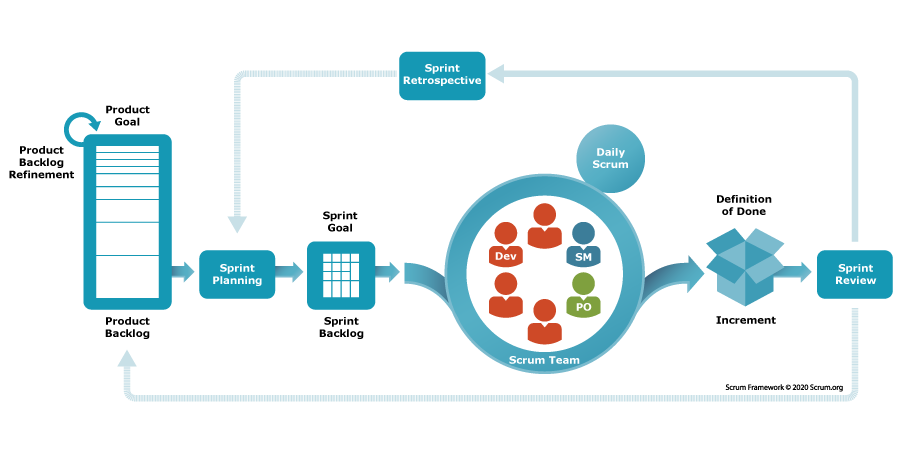
In the ever-evolving landscape of project management, Scrum has emerged as a dominant framework within the Agile methodology. Originating from the early 1990s, Scrum’s iterative and incremental approach has revolutionized the way teams develop products and deliver value. This blog post delves into the core concepts, roles, events, and benefits of Scrum, highlighting why it has become a staple in the toolkit of modern project managers and teams.
What is Scrum?
Scrum is an Agile framework designed to help teams work together more effectively. It emphasizes collaboration, flexibility, and iterative progress towards a well-defined goal. Scrum breaks down large projects into manageable chunks called “sprints,” which are typically two to four weeks long. At the end of each sprint, the team delivers a potentially shippable product increment, allowing for continuous feedback and improvement.
Core Roles in Scrum
Scrum defines three primary roles essential for its successful implementation:
- Product Owner: The Product Owner is responsible for maximizing the value of the product resulting from the work of the Development Team. They manage the product backlog, prioritizing tasks based on business value and stakeholder needs. The Product Owner acts as the liaison between the stakeholders and the Development Team, ensuring the team works on the most valuable features first.
- Scrum Master: The Scrum Master serves as a facilitator and coach for the team. They ensure that the Scrum framework is followed, help remove any impediments that the team might face, and foster an environment for continuous improvement. The Scrum Master is not a traditional manager but rather a servant leader dedicated to helping the team perform at their best.
- Development Team: Comprising professionals who do the work of delivering a potentially releasable increment of “Done” product at the end of each sprint. The Development Team is self-organizing and cross-functional, meaning they possess all the skills necessary to create the product increment. They work collaboratively, share responsibilities, and hold each other accountable for their progress.

Key Events in Scrum
Scrum revolves around a set of structured events that promote regular inspection and adaptation:
- Sprint Planning: At the beginning of each sprint, the entire Scrum team collaborates to define the sprint goal, the work to be completed, and how that work will be achieved. The Development Team selects items from the product backlog to work on during the sprint.
- Daily Scrum: A short, time-boxed event (usually 15 minutes) where the Development Team synchronizes activities and creates a plan for the next 24 hours. Team members discuss what they did the previous day, what they plan to do today, and any obstacles they face.
- Sprint Review: At the end of the sprint, the team and stakeholders review the work completed. The team demonstrates the product increment and gathers feedback. This collaborative review helps ensure that the product evolves in the right direction.
- Sprint Retrospective: Following the Sprint Review, the team reflects on the sprint to identify what went well, what didn’t, and how processes can be improved. The goal is to continuously enhance team performance and process efficiency.
Benefits of Scrum
The adoption of Scrum offers numerous benefits:
- Improved Collaboration: Scrum fosters a culture of collaboration and communication, helping teams to work more effectively together.
- Enhanced Flexibility: The iterative nature of Scrum allows for adjustments based on feedback, making it easier to adapt to changes.
- Higher Quality Products: Regular inspections and adaptations lead to continuous improvement and higher-quality outputs.
- Increased Customer Satisfaction: By involving stakeholders throughout the process and delivering value incrementally, Scrum ensures that the final product meets customer needs more accurately.
Conclusion
Scrum’s structured yet flexible framework empowers teams to deliver high-quality products efficiently and effectively. By emphasizing roles, events, and continuous improvement, Scrum helps teams navigate complex projects with agility and precision. Whether you are a seasoned project manager or new to Agile methodologies, embracing Scrum can significantly enhance your team’s productivity and project success.






